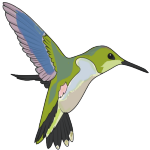Expert Tips for Early Reading and Writing Skills
Activities to encourage early reading and writing for your child, are providing in this interview with reading specialist Tracey Wood, author of Teaching Kids To Read for Dummies.
Interview by Allison Martin
At what point should I become concerned if my child can not read?
As a rule of thumb, the majority of children start to read between ages five and seven . If you're concerned that nothing's happening for your child at this time, get straight into action . If your child’s older than seven, be extra vigilant. Commit to reading with him and running through the activities that I describe next . Set a schedule of thirty minutes every school night (or similar) and be sure to keep your tone happy and positive. Remember that even if your child adopts a couldn’t-care-less attitude, he really wants to read and keep up with friends.
What activities can we do to encourage reading?
For pre and early readers the best skill you can help with is “phonemic awareness.” This fancy term means that you help your child understand that words are made of chunks of sound. The first sounds to get on top of are single letter sounds but move quickly to chunks like “an”. Show your child word “families” like “pan”, “man”, “fan” and “tan”. When your child’s comfortable with these, move to longer, still phonetically regular words, like “stamp” and “plan”. Add the special chunks, “ch”, “th”, “sh” and “wh” (“chip”, “thin”, “shop”, “when”) then progress to sounds like “oo”, “ai” “ou” and “ight”. This phonetic understanding is crucial for fluent reading and once your child’s fluent he’ll want to read more.
The other key aspect of achieving fluency is “sight words.” These are a bunch of words that occur so often in any text that your child must have sight recognition of them. They’re words like “they” and “were”. They’re not always easy to sound out. Have your child sound out what he can, like the “wh” in “what”, then help him remember the rest of the word by its appearance. A group of 220 sight words comprises a whopping 70% of all text so when your child recognizes all 220 words instantly, he’s 70% closer to fluent reading.
Lastly, keep the reading books coming! Read with your child often. There’s no better way to instill a love of reading, and when your child is a good reader her skills generalize. Studies show that good readers do well not only in reading but in all sorts of other areas, like sociability and showing initiative. A number to remember when you read with your child is three. Read with her at least three times a week to vastly increase her chances of success.
How can I help my child with letter reversal?
Letter reversals are a typical part of learning to write. Don’t worry too much if you see a few backward ps and ds in your child’s writing, it happens with most kids at sometime. A good way to help your child get better visual recall of tricky letters is to draw features into them. P, for example, can become a character called Polly or Peter. Draw a nose on the p, facing in the left to right reading direction, add hair and eyes, and remind your child that Polly always faces in the reading direction. A great way to remember which way b and d face is to have your child write the word “bed”. Have her see the word as an actual bed and draw the bed shape around it. Draw a blanket and pillow. Tell your child that nothing can stick out of the bed, the b and d must face inside or you could fall and hurt yourself. Anytime she’s unsure of b or d she can simply make her bed!
